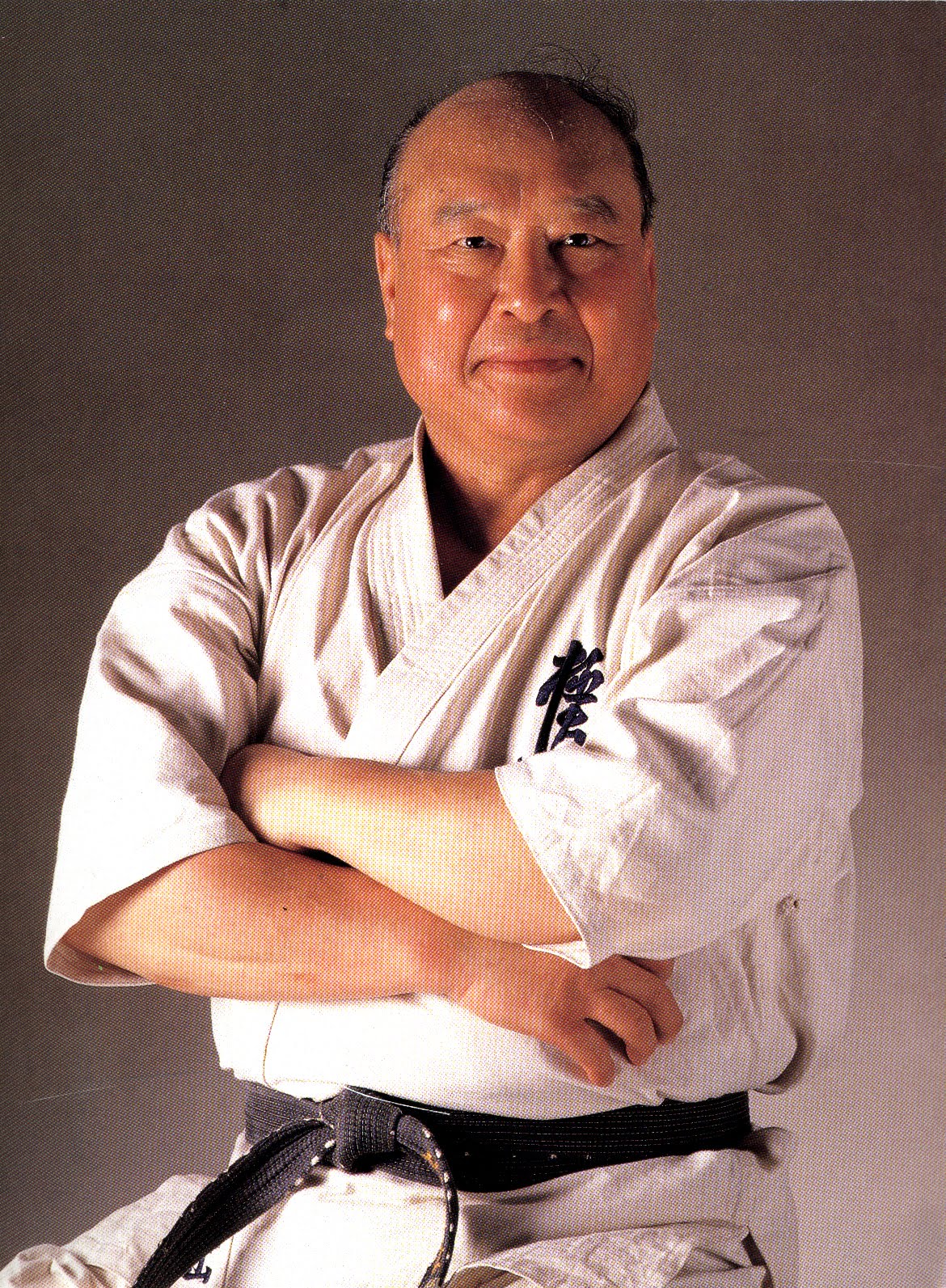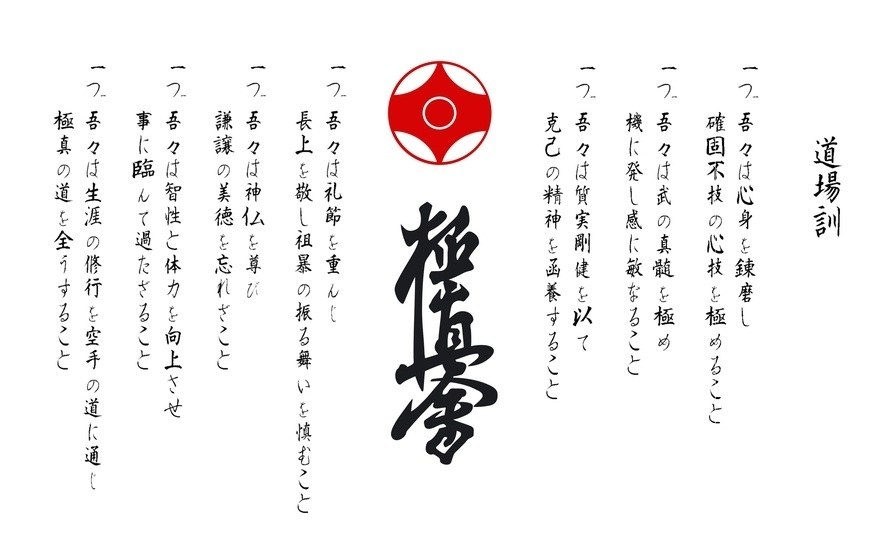The Ultimate Truth
There has been much written on the history and origins of Karate and, indeed, Martial arts in general. Although still very speculative in the very outset, the history and lineage become clearer from the time of martial arts being practised in Okinawa.
It is not the intention of these pages to repeat or rewrite these texts, but merely to provide a general overview.
It is probably a romantic notion that we are able to attribute ‘Karate’ or fighting arts in general back to a single person, but legend has it, that over a thousand years ago, a Buddhist monk called Bodidharma travelled from India to a monastery in Shaolin-si, China.
There he adapted the regular exercise regimen to strengthen the mind and body, to form the basis of Chinese martial arts.
A more general idea is maybe that travelling religious people, envoys, merchants, military personnel or students had to learn to avoid being attacked and therefore learnt to fight.
After many years, these ”secret”, fighting arts spread across Asia and indeed found a home in Okinawa. Historically, an independent kingdom, but was strongly influenced by Chinese culture. These arts would be generally called Okinawa Te, or Okinawa hand.
Here, on this small island, there derived three main streams or styles of ‘TE’,
Each being called after the area in which they were practised; Shuri-te, Naha-te and Tomari-te.
Due to a couple of historical events and the subsequent banning of weapons, these fighting arts were practised to refine their hand techniques in secret, and no records were ever kept.
It was not until the early 20th century, after Anko Itosu, ‘the grandfather of modern karate’ in 1901, was instrumental in getting karate introduced into Okinawa’s schools; and later when one of his students, Gichin Funakoshi, ‘the father of modern karate’, gave a demonstration of his karate prowess in Kyoto, Japan. This was well received and much interest in karate followed. He was invited to remain in Japan to teach and promote karate.
During this time, the art was called Chinese Hand, but to improve acceptance in mainstream Japan, he adopted the translation of the same symbol as ‘empty’, Kara, and subsequently changed the name of the art to the now recognised ‘karate’ or empty hand.
Today, there are thought to be 4 main lines or styles of karate:
Goju Ryu; Shoto Kan; Shito Ryu and Wado Ryu. Each having their own systems and philosophies of movements.

Kyokushin karate was founded by the late Sosai Masutatsu Oyama (1923-1994).
Who, after many years of rigorous training in various fighting styles, formed his own style and decided on the name derived from ‘kyoku’ meaning ultimate or extreme and ‘shin’ meaning truth.
The ideals of Sosai were to overcome your own presupposed physical limitations and attain a level of ‘truth’ in yourself and your karate forged by hard training.
His own legendary training followed a regimen of self-sacrifice and hardship that will never be repeated. It included 18 months of solitary training in the mountains, where he “trained every day for longer than I slept”. It included running up steep slopes, lifting large rocks as weights, jumping bushes and boulders many times, striking trees to condition his hands and feet and meditation under freezing waterfalls.
After he amazed the world with his amazing karate prowess, he opened his first Dojo, training hall, in 1953, and after training many overseas students in the ‘Honbu’, world headquarters, Kyokushin Karate spread globally and became the largest martial art association with over ten million members worldwide.
Sadly, Sosai passed away in 1994, but his legend and legacy still lives on today with instructors passing on his philosophy in dojo throughout the world.
Kyokushin Karate is more than just a martial art for self-defence; it encompasses an entire system of well being for the individual, and teaches skills and attitudes that can last a lifetime.
Positives of the training include; discipline, respect, exercise regimen, confidence and a social atmosphere.
The classes are very structured and the accredited instruction available is world class.
Beginners are welcomed, and regardless of age, sex and physical capabilities, anyone can start training in karate and enjoy it.
If students enjoy competition, there are several tournaments of differing descriptions throughout the year.
There is a thorough syllabus for your advancement through grades and your progress and skill acquisition is monitored to allow people to learn at their own pace.
We teach Kyokushin as the completely holistic martial that it was designed to be. Modern karate has evolved into a long range kick, punch, block art to be used in arenas for competition or for demonstration. Karate was once so much more than that and we aim to include throws, locks, traps, grappling and escapes. Everything from basic technique, through to the top of the pyramid, being able to effectively protect yourself or loved ones is covered in our training.
Our Dojo
Here at the Palm Beach Dojo, we pride ourselves in providing quality, progressive instruction, within structured guidelines in a caring safe environment. That’s not to say the traditional values and work ethic of Kyokushin Karate are diminished in any way.
If you want to find some truth in you and your training, come join us.
The Kyokushin Oath
- We will train our hearts and bodies for a firm unshaking spirit.
- We will pursue the true meaning of the Martial Way, so that in time our senses may be alert.
- With true vigour, we will seek to cultivate a spirit of self-denial.
- We will observe the rules of courtesy, respect our superiors and refrain from violence.
- We will follow our religious principles and never forget the true virtue of humility.
- We will look upwards to wisdom and strength, not seeking other desires.
- All our lives, through the discipline of karate, we will seek to fulfill the true meaning of the Kyokushin Way.
